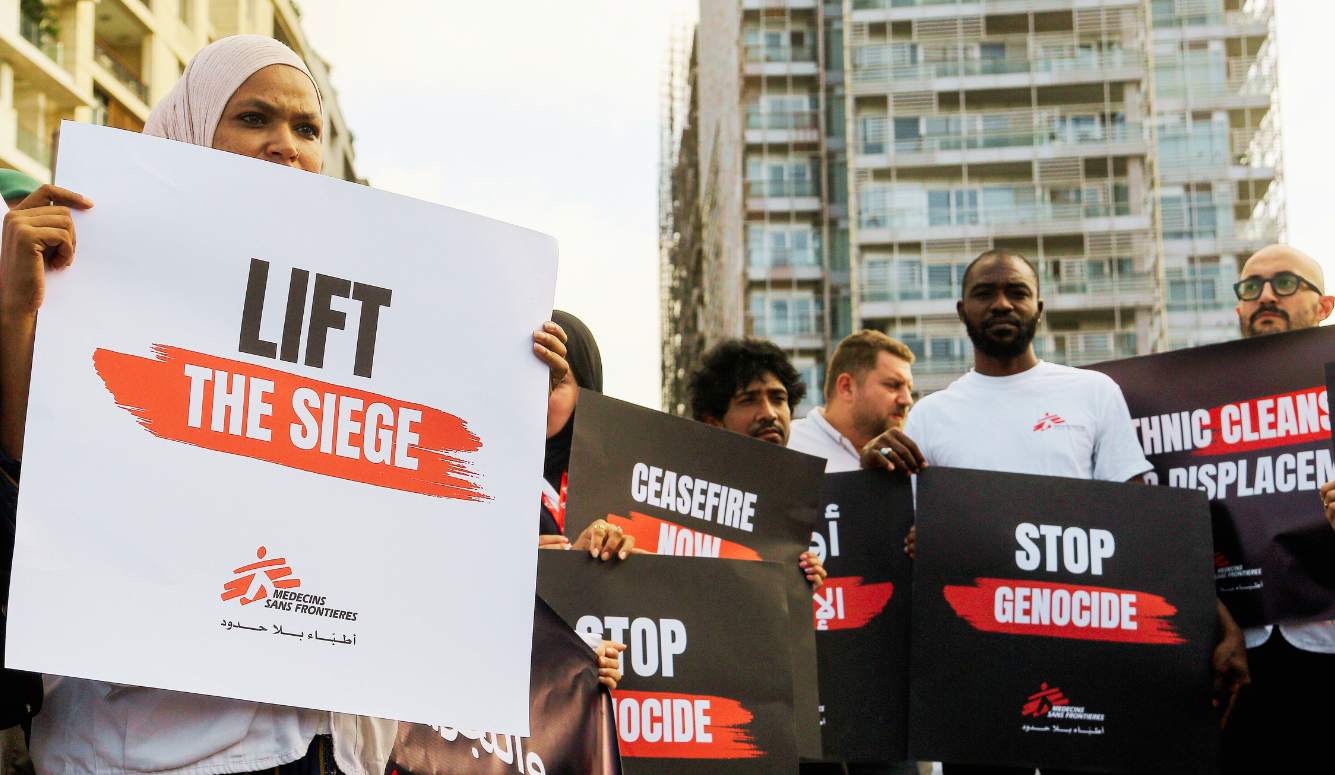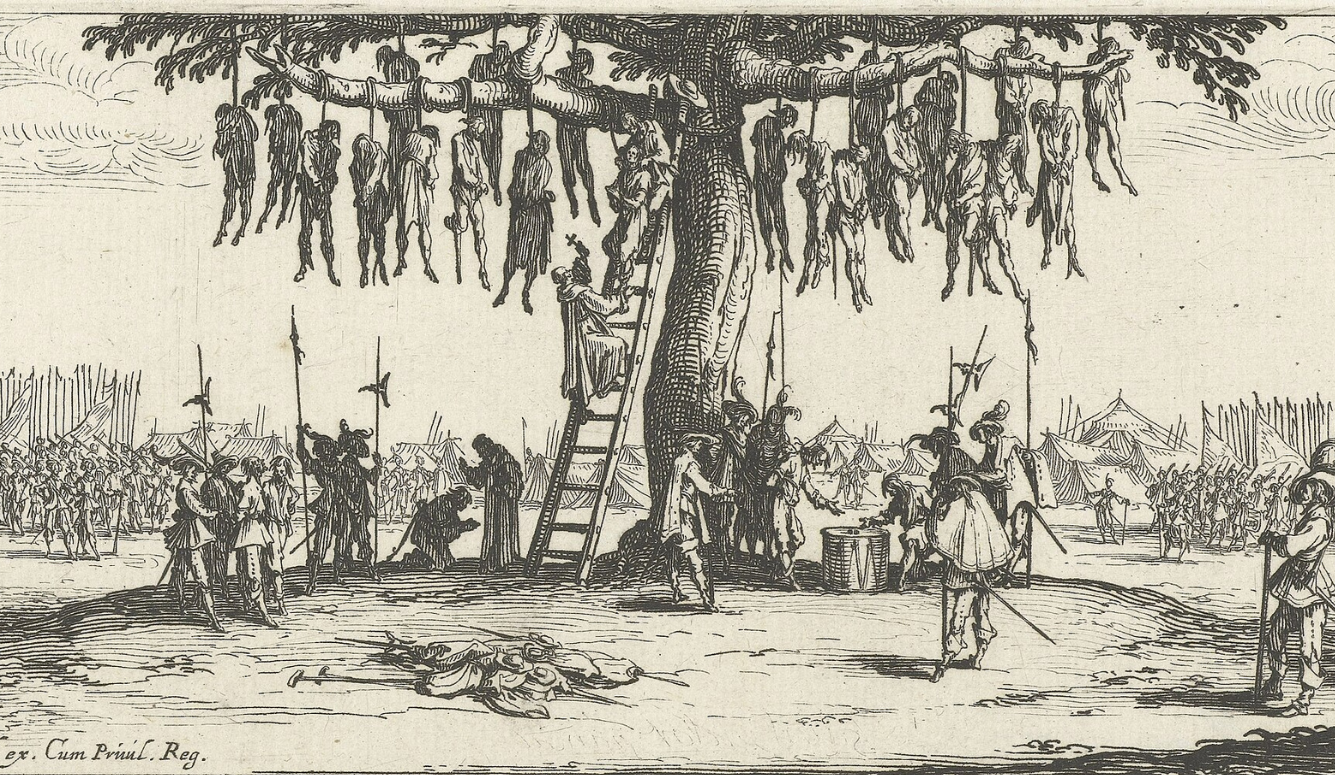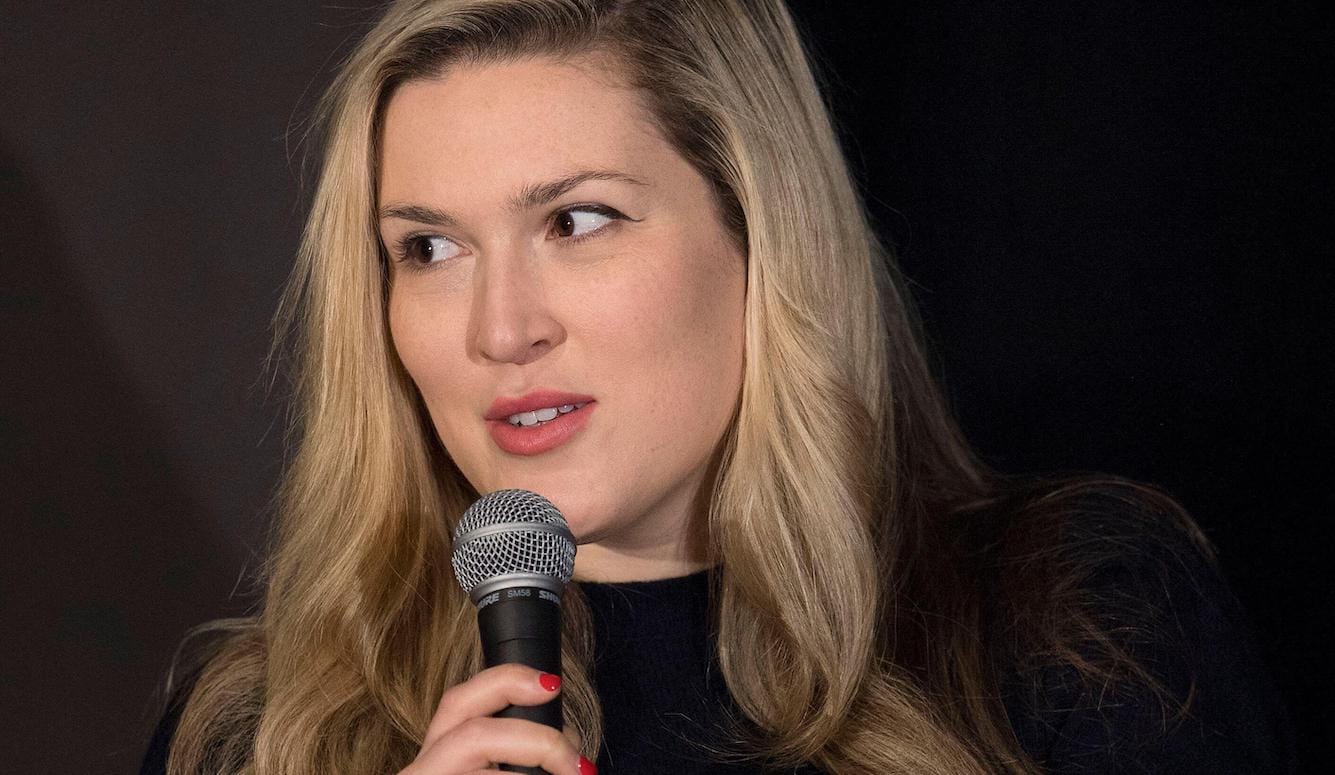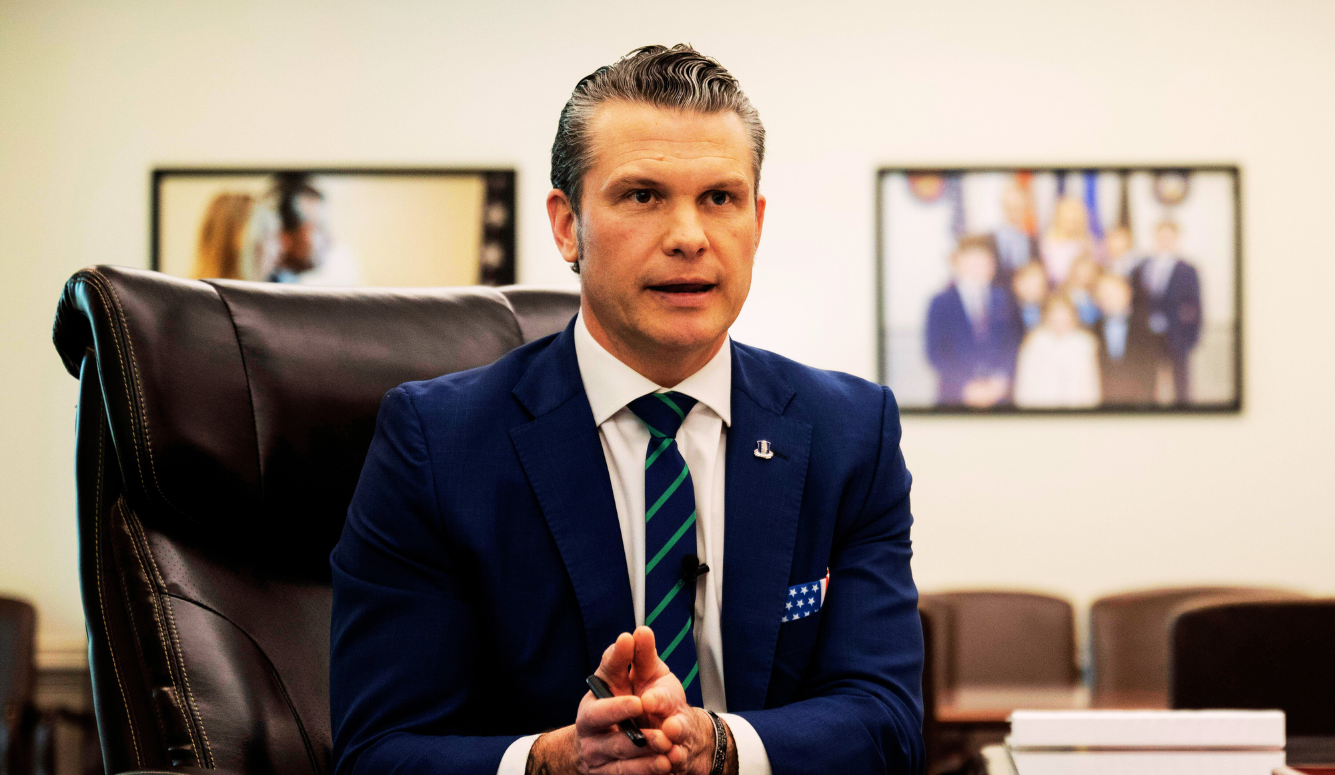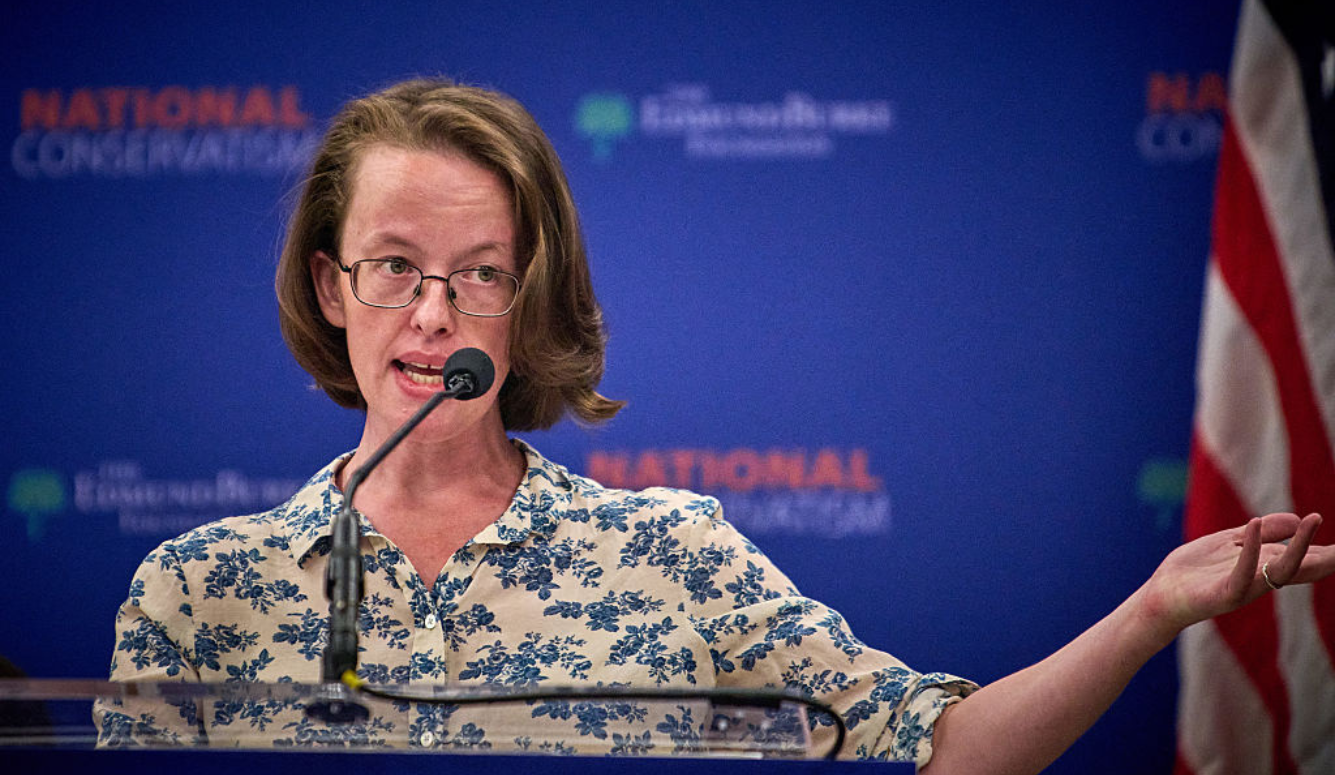Jew-Hatred in America: Not as Bad as Jews Think, Not as Good as it Could Be
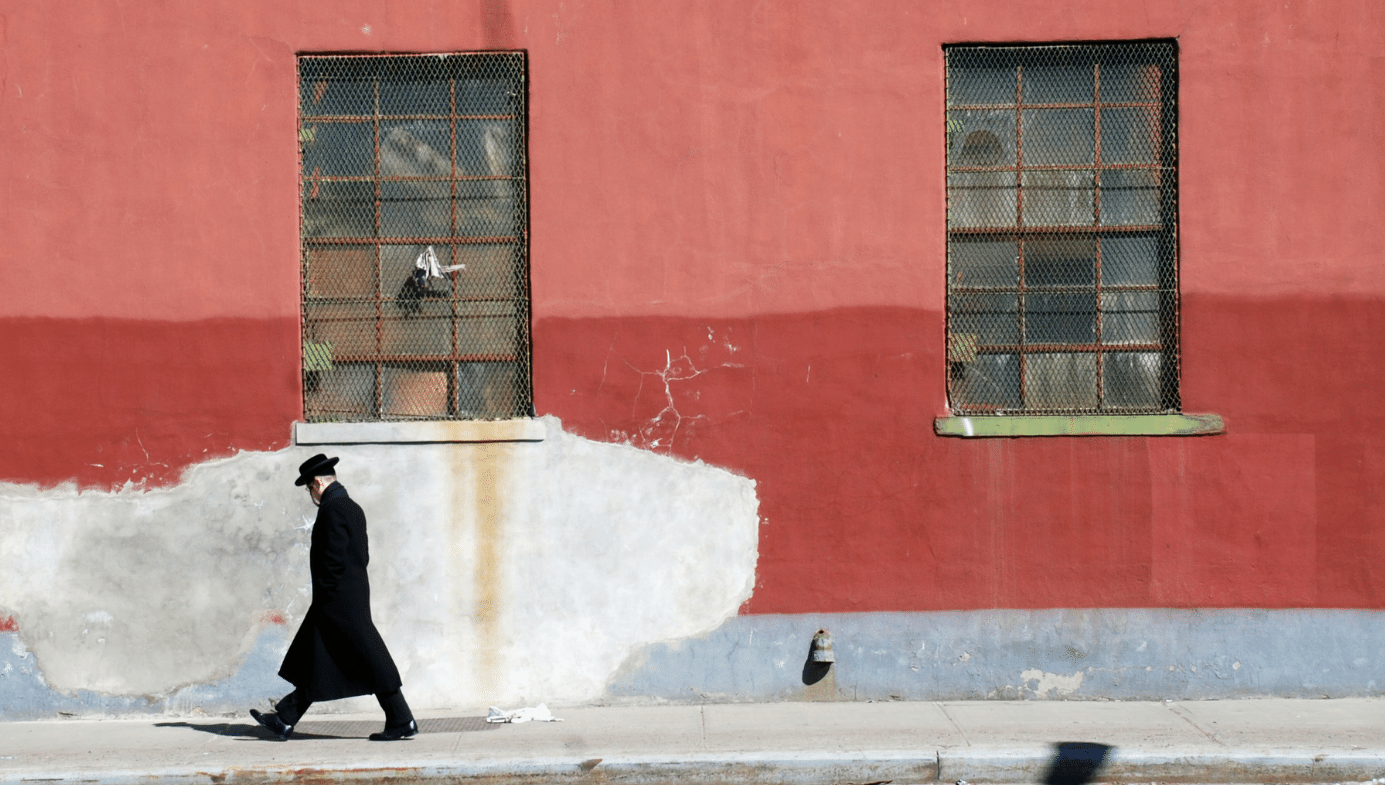
The tense hostage standoff at Congregation Beth Israel in Colleyville, Texas, this past January was like a false positive reading. The incident heightened awareness of growing antisemitism in America—even though a British-Pakistani Islamist’s terrorist attack should not reflect on Americans. In fact, the history of American antisemitism is not as bad as most people think but not as eclipsed by “good will” as George Washington promised. American Jew-hatred is milder and more marginal than most Jews fear—yet more prevalent than it should be in a healthy democracy.
By contrast, the Wikipedia entry “History of antisemitism in the United States,” offers a clear, depressing story—a series of false positives. Backed up with 140 notes, the lengthy entry lists one antisemitic incident after another, from Peter Stuyvesant’s mid-seventeenth-century tirades in New Amsterdam against the Jews as “deceitful,” “very repugnant,” and “hateful enemies and blasphemers of the name of Christ,” to the Colleyville, Texas trauma. The most infamous assaults include General Ulysses S. Grant’s General Order No. 11 in 1862 expelling Jews “as a class” from Western Tennessee; the 1915 lynching of Leo Frank in Georgia; the legendary automaker Henry Ford’s rantings in the 1920s; the spike in American Jew-hatred during the Holocaust; and the recent shootings in the Pittsburgh synagogue in October 2018, the Poway Chabad in April 2019, and the Jersey City kosher grocery store in December 2019.
This litany is accurate but misleading. For starters, using the same label “antisemitism” to describe Jew-hatred in America and the rest of the world, lacks a sense of proportion, blurring the mostly annoying with the often lethal. It’s like comparing a flu—sometimes deadly, usually not—to pancreatic cancer. American Jew-hatred is not like the “good old-fashioned Jew-hatred” Jews endured in Europe, the Middle East, and North Africa. It’s rarely been lethal and even less rarely been respectable. Listing the damage done by the small minority of American Jew-haters buries the lede: America, overall, has been one of the most accepting, most Jew-positive nations in history. Almost every American antisemitic incident had a happy ending—with most politicians and people condemning the bigotry.
Traditional American Jew-hatred: persistent but rarely virulent
America imported antisemitism from the Old World. This genetic Western Jew-hatred was rooted in the false accusation of Jews as Christ killers, nurtured through centuries of medieval persecution and deeply ingrained into both Protestant and Catholic theology.
At the same time, immigrants reached the New World hoping to leave behind many of their ancestral prejudices. Some colonies like Pennsylvania offered freedom of conscience to those who worshipped differently. Nevertheless, until its 1790 Constitution, even Pennsylvania insisted that all officeholders “believe in Jesus Christ, the Savior of the World.” Long after the American Revolution, North Carolina, South Carolina, Georgia and New Hampshire decreed that only men “of the Protestant religion,” could hold office. That limitation—cited from New Hampshire’s 1784 Constitutio—held in the Granite State until 1877.
This then was—and still is—the all-American ambiguity. The American Revolution established a Lockean and Jeffersonian regime that acknowledged human imperfection while challenging Americans to be as expansive, as generous, as possible. In this world, rights and freedoms have expanded exponentially over time. Jews were lucky beneficiaries of this large vision, having long enjoyed unprecedented freedom in the United States of America. But they keep encountering this genetic antisemitism—programmed into millions of otherwise democratically minded Americans.
In a nation addicted to glittering phrases, American Jews in the 1800s felt comforted by two sweeping promises. George Washington’s August 1790, Letter to the Hebrew Congregation of Newport defined the “Government of the United States” as one that “gives to bigotry no sanction, to persecution no assistance.” The Father of the Country offered a historic, precedent-shattering blessing: “May the children of the stock of Abraham who dwell in this land continue to merit and enjoy the good will of the other inhabitants—while every one shall sit in safety under his own vine and fig tree and there shall be none to make him afraid.” A year and a half later, in December 1791, the first half of the magical First Amendment to the Constitution proclaimed: “Congress shall make no law respecting an establishment of religion or prohibiting the free exercise thereof.”
From the very start of this grand national adventure, therefore, Jews felt doubly-buoyed by those Washingtonian aspirations and Constitutional guarantees. Together, American idealism and American law created a country that allowed Jews to flourish, and taught non-Jews to protect their fellow citizens when attacked.
That grand American vision made General Grant’s General Order No. 11 in December 1862 so anomalous. But while Wiki-history just lists the offense, true history recalls a Prussian immigrant in Kentucky, Cesar Kaskel, who lobbied President Abraham Lincoln. Responding to Kaskel’s plea to rescind the ban on Jews in Tennessee, President Lincoln lived up to his first name, and started talking Biblically: “And so the children of Israel were driven from the happy land of Canaan?”
Kaskel, reading the room, responded in kind, happily clumping America’s 16th president with history’s first Jew: “Yes, and that is why we have come unto Father Abraham’s bosom, asking protection.”
Flattered and enjoying the game, “Father” Abraham Lincoln replied, “And this protection they shall have at once.”
After overruling General Grant, Lincoln explained that “to condemn a class is, to say the least, to wrong the good with the bad.”
As president, Grant repented for what his wife Julia called “that obnoxious order.” He appointed Jews to public office. He attended Adas Israel’s dedication, becoming the first president to attend a synagogue service—heroically sitting through the entire, three-hour, ceremony. Grant also stood up for oppressed Jews in Russia and Romania. “Paradoxically,” the historian Jonathan Sarna argues, Grant’s “order expelling the Jews set the stage for their empowerment. … In America, hatred can be overcome.”
Similarly, many Jews bitterly remember that a mob lynched Leo Frank in 1915, while forgetting that Georgia governor John M. Slaton, convinced of Frank’s innocence, commuted his sentence—and was applauded in newspapers nationwide. Far more Jews today learn about Henry Ford’s anti-Jewish rantings, than about Aaron Sapiro, who sued the automaker for spreading antisemitic libel. Embarrassed and eventually forced to apologize, Ford shuttered his hate-spewing Dearborn Independent in 1927. Also overlooked is how Ford’s grandson “Hank the Deuce,” shipped auto parts to Israel, donated generously to Israel, and even established a Ford assembly plant there.
Tragically, the instinct, honed over centuries, to view Jews as outsiders, as threats, resulted in a decision with catastrophic consequences: The immigration restrictions passed in the 1920s, followed by the rise of American Jew-hatred and nativism during the stressful Great Depression of the 1930s, proved lethal in the 1940s. Antisemitism was only one piece of the anti-immigrant puzzle. Progressives at the turn-of-the-20th century sought to Americanize everyone. That is because many of the most liberally-minded Americans then feared Jews, Catholics, immigrants, and other outsiders, and believed in imposing their values on others. Those impulses festered with other American fears of anarchists, labor union organizers, and rival workers as competition, along with diversity, change, and other “un-American” influences.
When Adolf Hitler came to power dreaming of expelling Jews from Europe, the most welcoming country in the world (America), which absorbed two million Eastern European Jewish immigrants from the 1880s to the 1920s, had rolled up its welcome mat. America is not responsible for the death of six million Jews. But the American decision to clamp down on immigration doomed untold number of Jews—and other refugees—from Hitler’s evil too.
It would take at least two decades before American Jews started processing what little they or their parents did “while six million died”—the title of the first popular book exposing their passivity. Nevertheless, the Holocaust marked a turning point in the history of American antisemitism. Having sacrificed so much to defeat the Nazis, many Americans took great pride in repudiating totalitarianism. And, especially after watching newsreels of the liberated death camps, Americans understood how central Jew-hatred was to Nazi ideology. While the shock was not strong enough to eliminate antisemitism from all Americans, it sent antisemitism mostly underground. Even as the Soviet Union was fomenting a vicious, worldwide, left-wing antisemitism, even as the New Left in the 1960s started peddling anti-Zionist antisemitism, most Americans and American Jews discredited antisemitism as a right-wing, authoritarian, un-American thought-disease.
In an ideal world, this post-Auschwitz realization would have ended the short, unhappy life of American Jew-hatred. The 1947 blockbuster movie, Gentleman’s Agreement, could have functioned as the cinematic funeral of American antisemitism. Based on Laura Hobson’s novel, the movie starred the matinee idol Gregory Peck as a WASP journalist who goes undercover as a Jew—and experiences far more Jew-hatred than he expected. With this Academy-Award-winning, surprisingly popular hit, American anti-antisemitism went mainstream. In the postwar era, American Jews would become more established, more confident, and more Americanized. As American Jewry became more established, more and more Americans could sincerely deliver what became a classic condescending cliché: some of their best friends—or at least close acquaintances—were Jewish (and now many Jews are their relatives-by-intermarriage too). Alas, despite hopes for this Hollywood finale, this pesky virus of Jew-hatred festered and mutated, producing some virulent strains today that operate brazenly, unashamedly, in public.
Identity Jew-hatred today—tribal and unapologetic
Most Jews feel incredibly comfortable and broadly accepted in America today. “In the U.S., no major religious group is viewed more warmly by the overall public than Jews,” the Pew Study reported in July 2019. Yet, recent polls also show growing Jewish alarm over antisemitism. Today’s fight against Jew-hatred is a five-front battle, proving that what the historian Robert Wistrich called “the longest hatred” is also the most plastic hatred—moldable, adaptable, artificial, and toxic. In a deeply-divided country, rival groups share a common hatred of the Jew. Some wear baseball caps with Confederate Flags or MAGA labels, integrating their antisemitism into white supremacism. Some sport keffiyehs, going far beyond support for Palestinians into rank, sometimes violent, Jew-hatred. Some wear academic mortar boards, masking traditional antisemitism behind progressive and academic anti-Zionism. Some wear hoodies, justifying their street crimes with ancient Jewish stereotypes. And some, the least visible, least likely to generate headlines, wear golf caps in their country clubs disdaining “those Jews.”
Today’s Jew haters wearing baseball caps emblazoned with the Confederate Rebels “Blood Stained Banner”—and their allies—reflect the authoritarian white supremacist Jew-hatred that went underground after Hitler—but never vanished. In the 1950s and 1960s, most Jews and north-eastern opinion-makers mocked these right-wing haters, be they the Ku Klux Klansmen in their white robes or the founder of the American Nazi Party George Lincoln Rockwell with his discordant look, smoking a pipe while showing off his Swastika armband.
In one of the most influential social psychology books ever written, The Authoritarian Personality, in 1950 the German-born philosopher and sociologist Theodor Adorno, backed by a team of researchers, publicized their F-Scale Personality Test. With “F” standing for fascist, they concluded that “neither ethnocentrism nor Antisemitism ever showed a tendency to go with leftist liberal views.” Adorno’s research gave scientific backing to the typical American Jew’s fear of the Right and the typical Northern sensibility that “it”—meaning the Holocaust—could never happen “here.”
Vowing “Never Again,” most American Jews fought these bigots—and their successors like David Duke—easily, unambiguously. To an overwhelming liberal American Jewish community, fighting Jew-hating Nazis, white supremacists, and racists, made sense. It expressed their most passionate political attitudes, shored up their most treasured alliances, and reinforced their take on how the world works.
With the spread of social media, more of these antisemites slithered out of the woodwork, giving them public platforms they lacked, while developing nationwide networks that can now flourish. The rise of white backlash politics, while mostly responding to black-white issues, naturally targeted the Jews too. At the ugly Charlottesville, Virginia “Unite the Right” rally in August 2017, right-wingers shouted the bizarre slogan “Jews will not replace us.” This cry is rooted in ancient fears the alt-Right peddles, that America’s small but overwhelmingly liberal Jewish community is orchestrating the rise of America’s immigrants and minorities to displace God-fearing white Americans.
To nearly three-quarters of the Jewish community, Donald Trump’s presidency fed their greatest fears. To many Jews, Trump symbolized right-wing America at its worst: vulgar, bullying, sexist, racist, anti-immigrant, xenophobic, unprincipled, insulting, and antisemitic. Many found Trump’s tweets offensive—and the supporters he encouraged even worse. In February 2018, the head of the ADL—the Anti-Defamation League—linked the “dramatic spike in antisemitic incidents in 2017” to Trump’s lack of moral leadership and constant twitter-bouquets to the Far Right. “The president’s retweeting of white supremacists and antisemitic memes” along with his “rhetoric,” have “given encouragement to the worst antisemites and bigots,” said Jonathan Greenblatt. In December, 2019, after the President told a Jewish group “you’re going to be my biggest supporters because you’re going to be out of business in about 15 minutes” if the Democrats win, the American Jewish Committee protested the “money references that feed age-old and ugly stereotypes.” Deeming his remarks, “deeply offensive,” The Jewish Democratic Council of America proclaimed that Trump’s “deeply offensive” remarks “only reinforce our belief … that Donald Trump is the biggest threat to American Jews.”
At the same time, Trump’s passionately pro-Israel position, which most Republicans echoed, had other Jews cheering him, including 83 percent of Orthodox Jews. This dramatic gap in perceptions politicized the fight against antisemitism within the American Jewish community. All too often, left-wingers only complained about right-wing antisemitism, while right-wingers only complained about the left-wing antisemitism they saw growing within the Democratic Party, on campuses, and in other corners of “Blue America.”
Although Zionists hoped that establishing Israel in 1948 would eliminate antisemitism, the Arab-Israeli conflict unleashed new waves of Jew-hatred. Professor Judea Pearl calls this Zionophobia, noting that the vicious, irrational hatred against Israel and Zionists is as illegitimate as the vicious, irrational hatred against the Jews underlying it. Clearly not every Muslim is antisemitic, and not every Palestinian is antisemitic, but there are many haters, often wearing keffiyehs as their symbol, who clump together Islamism, pro-Palestinianism, anti-Zionism, and antisemitism. The most publicized antisemitic violence in America this past year represents this second strain. Particularly worrying were the Palestinian protesters who turned violent during the Israel-Gaza conflict in May, beating Jewish sushi diners in Los Angeles, pummeling a Jewish cyclist in Times Square, and pelting a Miami family with garbage, rape threats, and curses, including “Free Palestine, f--- you Jew, die Jew.” There seem to be far fewer antisemitic Jihadists, like the Texas hostage-taker—or like the Seattle Jewish Federation shooter in 2006, who killed one and injured five, while berating “the Jews” for supporting Israel. Such Jihadists threaten all Americans. Still, 86 percent of Jews surveyed identify “extremism in the name of Islam” as an antisemitic threat.
Fighting Islamist antisemitism is harder for American Jews. Many fear being tagged as Islamophobic. The antisemitism of the Left, centered on American campuses, but now finding a welcoming home on the margins of the Democratic party and in many intellectual circles further confuses. Stemming from a two-centuries-long addiction some leftists and Marxists have had to antisemitism, this Jew-hatred hides behind a critique of Israel and support for the Palestinian cause. Over the last 40 years, empowered by identity politics and the passions stirred by the Middle East impasse, these Jew-haters have turned increasingly self-righteous. Often masking traditional anti-Jewish tropes behind modern human rights talk, insisting “we’re not antisemitic, we’re only anti-Zionist,” they feel validated by their alliances with a few far left-wing Jews and other social justice warriors. But it defies logic that when Black Lives Matter emerged with a manifesto in 2016, it only had one foreign policy plank—targeting Israel. There is no justification for seeing cartoons and protest signs, after George Floyd’s murder, blaming the Israeli army for centuries worth of American racism and police brutality. This “deadly exchange” campaign on campuses and elsewhere was characterized by the chant reeking of the medieval blood libel: “Israel we know you—you murder children too.”
Many liberal Jews feel torn. They want to ally with these social justice crusaders on other missions. They support many of their goals. Yet most—not all—Jews note how the obsession with the individual Jew has now become the obsession with the collective Jew (Israel). Many accusations, slurs, caricatures, and now memes recycle—and update—traditional anti-Jewish libels about Jews being rich, privileged, powerful, sinister—and bloodthirsty.
For some Jewish liberals, the confusion even extends into the fourth battlefront, against the crass antisemitism of the street. Most people can recognize the bullying of Orthodox Jews in their own neighborhoods, the vandalizing of synagogues, schools, and cemeteries, as unconscionable crimes. Yet, during a spate of Jew-beatings in 2019, one progressive rabbi tweeted: “the horrible attacks on Orthodox Jews in Brooklyn & elsewhere likely relate to long-term tensions & don’t fall easily into left/right category. Not parallel to white nationalists whose beliefs are based on antisemitism.” This activist clearly was more comfortable fighting antisemitism from the Right than acknowledging the antisemitism of her allies on the Left.
It is not politically correct to say but it is true: the violence epitomized by grainy video capturing some street thugs usually targeting Orthodox Jews, mostly in the New York area, is not random. Just as Trump’s rhetoric emboldened some Jew-haters online, certain ideological trends and conversational undercurrents in their communities embolden these criminals on the street. Some of the trends are universal or fester worldwide, from the jealousy of the “have-nots” to the obsessive demonization of Israel. Some trends find validation in modern progressive discourse, including the new, sweeping, stereotype of Jews as having “white privilege,” even though so many Jews—especially Israelis—are not white, not rich, and not free of Jew-haters. And some trends reflect certain African-American tropes, especially the obsession with Jewish shopkeepers and landlords—accusations fueled by demagogues like Louis Farrakhan and denounced by other prominent African-Americans like the basketball legend Kareem Abdul-Jabbar.
Finally, the instinctive, underlying, genetic antisemitism of yesteryear still lives. It has shrunk. It remains mostly underground. It has often been forced to coexist uncomfortably with Jewish friends and relatives. But what we might call the antisemitism of the country club or the golf cap, that age-old sense that the Jews are too different, too aggressive, too grabby, to be fully accepted in polite society survives. A recent ADL poll found that 61 percent of Americans agree with at least one of eleven statements about Jews, with accusations of clannishness, ambitiousness, and dual loyalty toward Israel most popular.
Still, overall, most modern antisemitism is more transactional and less mainstream than ever before. In an increasingly fragmented society, it often functions as a strong tribal impulse shaping the identity of key factions. Characteristically, the most totalitarian voices in America today, from far Right to far Left, are the most aggressively antisemitic forces in America today. Their authoritarianism feeds a discomfort with “those Jews” who stand out yet fit in, who look successful yet grumble about their oppression, who are deeply American yet also tied to a foreign country, Israel. Theodor Adorno would be surprised by the many liberal antisemites but not at all surprised that these progressive antisemites are disturbingly rigid and intolerant too.
Shortly after the murder of 11 Jews worshiping in the Pittsburgh “Tree of Life” synagogue in October 2018, I attended a nationalist rally in Kemp Mill, Maryland. Emotions were stoked by fire, slogans, catchphrases, speeches and a vision of what made America great. This rally, however, lacked strobe lights, megaphones, and shouts. At this neighborhood vigil opposing the violence that violated Pittsburgh’s Tree of Life synagogue, the light glowed from candles 250 parishioners of Saint Andrew Apostle Catholic Church carried as they marched on Kemp Mill Synagogue. The marchers’ slogans were “Love Thy Neighbor” and—implicitly—“Never Again.” The catchphrases constantly repeated— from the 150 or so overwhelmed synagogue congregants—were “thank you,” “bless you.” The speeches were short toasts celebrating religious and national unity, followed by a delighted clucking and chuckling of neighbors meeting one another that lingered longer than expected, into the cold night. After mourning silently, we schmoozed: Americans of all ages, colors, faiths and—this being suburban Washington—all political parties.
This soothing volcano of American neighborliness and nationalism occurred—coincidentally—80 years after Kristallnacht, the “Night of the Broken Glass,” when Nazis trashed 1,000 synagogues. In Hitler’s Germany and elsewhere throughout Europe, non-Jews marching toward synagogues wielding fire usually heralded disaster. In democratic America, non-Jews marching toward synagogues brought love, drowning out one deranged shooter who lived 235 miles away. Each candle generated red, white, and blue light at a dark moment.
Similar vigils or moments of silence took place nationwide, outside churches, in packed football stadiums, on military bases—under American flags flying at half-mast for three days of mourning, at President Trump’s direction.
It is increasingly unfashionable to talk about American exceptionalism. And it is easy to lose proportion, pointing to American Jew-hatred and Zionophobia as continuations of Jew-hatred historically. But, despite the wickedness of American antisemitism, while expressing zero-tolerance for any bigotry, some subtleties emerge. The kinds of antisemitism that exist, the minimal amounts of violence, employment discrimination, and ostracism involved, and, most important, the indignant, democratic fury presidents, politicians and the people express whenever antisemitism turns dramatically violent all suggest that while far from perfect, America still remains an exceptional nation.
